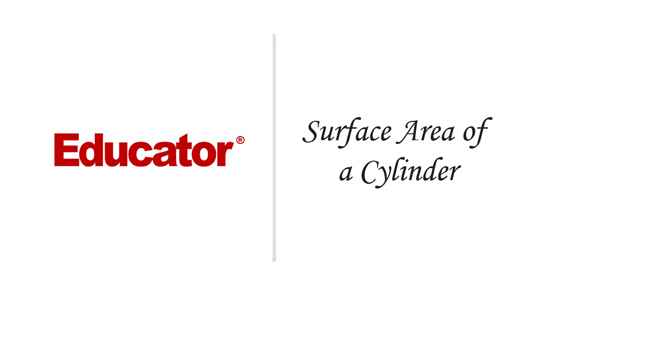Starting up...

This is a quick preview of the lesson. For full access, please Log In or Sign up.
For more information, please see full course syllabus of Basic Math
For more information, please see full course syllabus of Basic Math
Basic Math Surface Area of a Cylinder
Lecture Description
In this lesson our instructor talks about surface area of a cylinder. First she defines surface area of a cylinder. Then she talks about the formula of surface area for cylinder. Three extra example videos round up this lesson.
Bookmark & Share
Embed
Share this knowledge with your friends!
Copy & Paste this embed code into your website’s HTML
Please ensure that your website editor is in text mode when you paste the code.(In Wordpress, the mode button is on the top right corner.)
×
Since this lesson is not free, only the preview will appear on your website.
- - Allow users to view the embedded video in full-size.
Next Lecture
Previous Lecture










































 Answer Engine
Answer Engine



0 answers
Post by Erika Wu on July 25, 2020
why isn't 2?r = ?diameter
2 answers
Last reply by: Mr. Pikachu_ Pikapika
Sat Nov 14, 2020 1:57 PM
Post by Maryanne Stevens on January 29, 2016
Hello,
I think the last problem you forgot to multiply by 10 in regards to finding LA. You only did (2X3.14X6) which is 37.68, however you didn't multiply this by 10, which should be 3,768 inches square, then add the area of the two bases(circles in this case). I paused your video and completed the problem. ,y answer was 3,768 inches square + 2(113.04)inches = 3,994.08 inches square.
Am I right, or are you right?
Thank you
2 answers
Last reply by: Mr. Pikachu_ Pikapika
Sat Nov 14, 2020 1:57 PM
Post by Milan Ray on April 15, 2014
What are the circles for!
0 answers
Post by Daniel G Swedlund on August 31, 2013
I think the latin number for 9 = IX. While XI = 11.
0 answers
Post by Arpana Duggal on July 2, 2012
this chapter isnt 11 its 9!